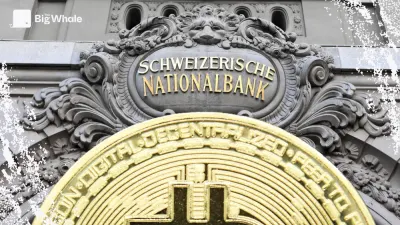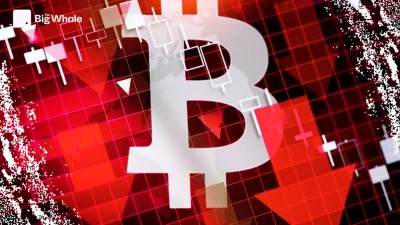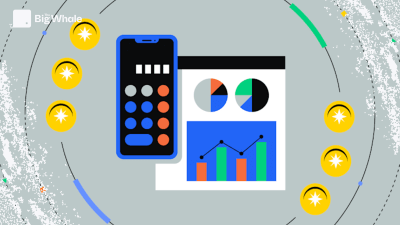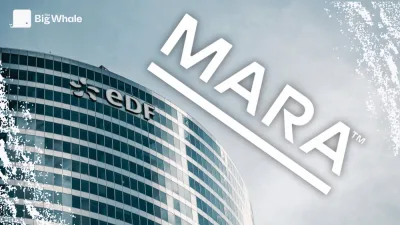TBW - Martin Köppelmann (Gnosis Pay): "Revolut is a kind of model for us".
"Revolut is a kind of model for us".

The Big Whale: You recently launched a payment card. Why did you decide to launch this type of product?
Martin Köppelmann: Using cryptocurrencies has never been very smooth. With this card, our aim is to enable our users to use their cryptocurrencies as easily as fiat currencies such as the euro or the dollar.
With the Gnosis Pay card, we have created a way for users to spend their cryptocurrencies directly in the real world, without the need for intermediaries or conversion services such as centralised exchange platforms. This is part of our wider vision to simplify and improve the user experience within the Ethereum ecosystem, and beyond.
To this end, Gnosis Pay users are provided with a non-custodial Safe wallet allowing them to maintain control over their funds. It is also possible to spend their cryptocurrencies via EURe, the regulated stablecoin from start-up Monerium.
Fairly, it is currently only possible to pay with this euro stablecoin. When will we see the integration of other stablecoins, in particular dollar stablecoins?
We are working on integrating the USDC, Circle's dollar stablecoin. In the long term, we want our card to be multi-currency by integrating other legal on-chain currencies.
Is it possible for a user to pay in dollars with the card? And if so, how does it work?
For the moment, the card is only available in its euro version. However, you can use it anywhere in the world. When you make a payment in the United States, for example, the card will always be debited in dollars using the Visa exchange rate. You won't have to worry about complicated conversions - the rate is handled automatically.
You've also launched a kind of interest-bearing cash account. Can you describe how it works?
Users have the opportunity to access an 8% return by holding on the Gnosis Chain of sDAI, which is a synthetic representation of DAI stablecoins immobilised in the Dai Savings Rate (DSR) of Maker (now Sky, editor's note).
Users can even integrate the Gnosis Pay card into Zeal Wallet to benefit from this return while automatically topping up the interest-bearing cash account with every spend. All this is made possible by Zeal Wallet, which built this solution using our open source tools.
What is your long-term goal? To become a kind of completely on-chain bank?
To some extent. The aim is really to facilitate access to basic banking services, such as the ability to hold funds yourself or send money virtually free of charge.
I was in Bangkok 2 months ago for the DevCon conference, and I found myself several times in the situation where a driver offered me a ride, but it was impossible for me to accept because he only took cash. It's a simple example that shows there's still a huge amount of friction in the payment industry.
Over time, we want to be able to manage as many stablecoins as possible on the Gnosis Chain so as to make currency exchange very affordable and easy for anyone. We are also developing AI agents that have started to make micro-payments between themselves. Eventually, they could automate a number of operations on the network.
So your ambition goes far beyond Europe?
We really want to be a global player by providing access to the blockchain, where costs are much lower than in the traditional system.
We are working on solutions where it will be possible to simply switch from one legal currency to another at virtually no cost. What's more, if you want to invest in a decentralised finance protocol (DeFi) or in financial products such as tokenised money market funds or even tokenised ETFs, that will also be possible.
Essentially, we want to be integrated everywhere. Recently, we were integrated into the Brazilian banking system via PIX, an instant payment system. This makes it possible for Brazilian users to move easily from the traditional world to that of blockchain. We are also working on other countries such as India.
Our ambition is to be connected to all banking access points worldwide to enable everyone to switch easily on-chain.
Why did you choose to work with Visa for your card?
For several reasons. Firstly, because Visa gives you access to nearly 100 million shops around the world. Then because their payment network is really efficient.
When it comes to issuing the card, which Visa doesn't manage, it's a bit more complex because you need to obtain licences in several jurisdictions. It's not like in Europe, where you have access to all European countries with a single licence. Soon, we hope to be able to cover almost 80% of countries worldwide.
How many people currently work for Gnosis Pay?
There are around thirty people working exclusively on Gnosis Pay. But more broadly, there are nearly 120 of us working on developing the Gnosis ecosystem, which includes projects such as CowSwap, a decentralised exchange.
Many players such as Coinbase, via its layer 2 Base, are also trying to position themselves by offering their own payment rails. Who are your competitors?
I don't really see Coinbase as a competitor, because at the moment, all initiatives are good to get the traditional on-chain economy on board.
I prefer to compare us to neo-banks like Revolut. For us, it's a model. The idea is to be a kind of neo-bank, but on-chain, with a whole ecosystem providing access to numerous financial products.
Today, you have a payment card. But several players such as Mastercard have positioned themselves to stop using cards and prepare for the future, in particular with QR Codes. What do you think about this?
The QR Code could obviously be an option. We're currently working on a wallet that will include the ability to generate a QR Code to pay. NFC technology also works very well with Apple Pay or Google Pay. But the physical card has shown that it remains the most reliable means of paying.
You've already integrated the card into Google Pay. What about for Apple Pay?
This will happen very soon.
You also offer cashback in GNO, the Gnosis governance token. How long do you plan to make it last?
The cashflow isn't infinite, so there's bound to be an end. But it's not going to happen just yet. The DAO has allocated an initial GNO10,000 for cashback and, so far, only a few hundred GNO have been spent.
Once that amount is spent, there's a good chance we'll allocate another GNO, with the treasury sitting at nearly GNO500,000.
For the moment, we're still in this phase of financial incentives to attract users, and cashback of up to 5% is an excellent tool.
What is the business model for Gnosis DAO?
Revenues from DAO come from a number of sources. There are of course transaction fees, but this is currently minimal because fees are extremely low. In the long term, if we attract a lot of users, this figure will increase.
Then there are projects like CowSwap, whose business model is that of a traditional decentralised exchange. Gnosis has a token stake in CowSwap. So I would say that, from this point of view, we have an ecosystemic approach: we participate in developing projects to enrich the ecosystem and bring maximum value to users.
You recently announced the launch of a venture capital activity with Gnosis VC. Is this with the same aim of supporting projects or generating income?
It's broadly the same approach. Once again, we want to have an ecosystemic approach, so that projects complement each other and don't evolve alone in their corner. With our VC arm, the aim is to invest in projects that grow our ecosystem.



